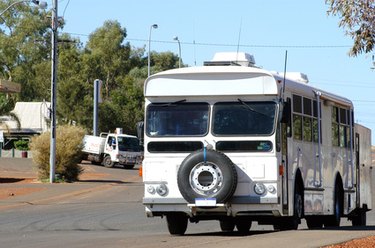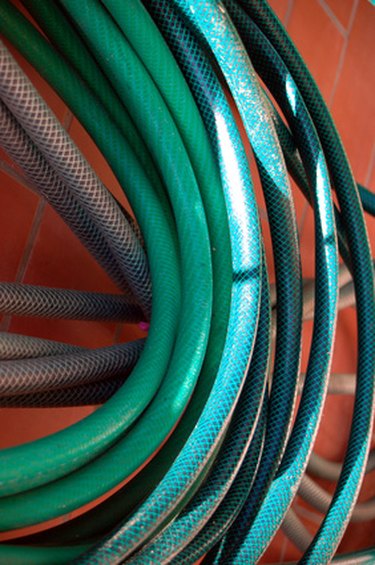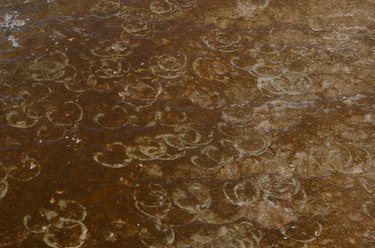Things You'll Need
Ladder
Flashlight
Screwdrivers
Long handled forceps or kitchen tongs
Holding tank rinse wand
Garden hose
RV tank vent cover
RV vent caulking

Unexpected sewage odors that appear in the bathroom area of your RV can indicate a clog in the air vent leading from the black water holding tank to the roof. Without a free exchange of air from the tank's air vent, flushing the RV toilet creates a vacuum. With no outlet for escape, the noxious tank fumes seep into the RV, creating an unpleasant environment. If the RV has been in storage, a bird or rodent nest may be obstructing the vent at roof level. For RVs in use, an overfull waste tank is usually to blame.
Step 1

Climb the ladder to the RV roof. Inspect the tank vent cover and caulking for damage. Tank vent covers are typically round and about 2 inches in diameter. If the vent cover is missing, look into the pipe using the flashlight to check for leaves and bird or rodent nests. Avoid pushing any material down the pipe. While on the roof, note whether the vent pipe is extending above the roof by an inch or two.
Step 2

Remove nest material using tongs or forceps if needed. Purchase and install a new vent cover and fresh vent cover caulk. Drive the RV a few miles to allow air to flow into the vent pipes and tank. If odors persist, the obstruction may be on the opposite end.
Step 3

Empty the black water tank, followed by the gray water tank, into an RV dump site. Connect the rinse wand to the garden hose. Keep the wand's shut-off valve closed.
Step 4

Open the trap at the bottom of the toilet bowl. Keep the trap open. Place the wand into the the opening, and turn the shut-off valve on. Rinse the pipe leading from the toilet bowl for a few minutes. This rinse will clean off waste and toilet paper buildup that may have been clogging the vent pipe.
Step 5

Add fresh RV black water tank enzymes and water per package instructions through the toilet.
Tip
A shop-vac can be used to remove leaves or nest materials from the roof vent pipe.
Odors can also come from the gray water tank. Most RVs have a vent under the bathroom sink, over the P-trap. Inspect this vent for clogs as well.
Don't allow the black water tank to get too full. Dump often to keep your RV fresh smelling.
Warning
For safety, have someone with you when accessing an RV roof.
Check the roof vent cap, and its caulking. Caulk can fail from age or tree damage, causing the entire vent pipe to fall down into the tank. This repair is best made by professionals, as it involves dropping the waste tank, and may involve moving electrical wires.
Since toilet paper can plug plumbing in an RV, use specially-made RV toilet paper. Some RVers toss used toilet paper into a special trash receptacle, to prevent filling up the waste tank and clogging the pipe.